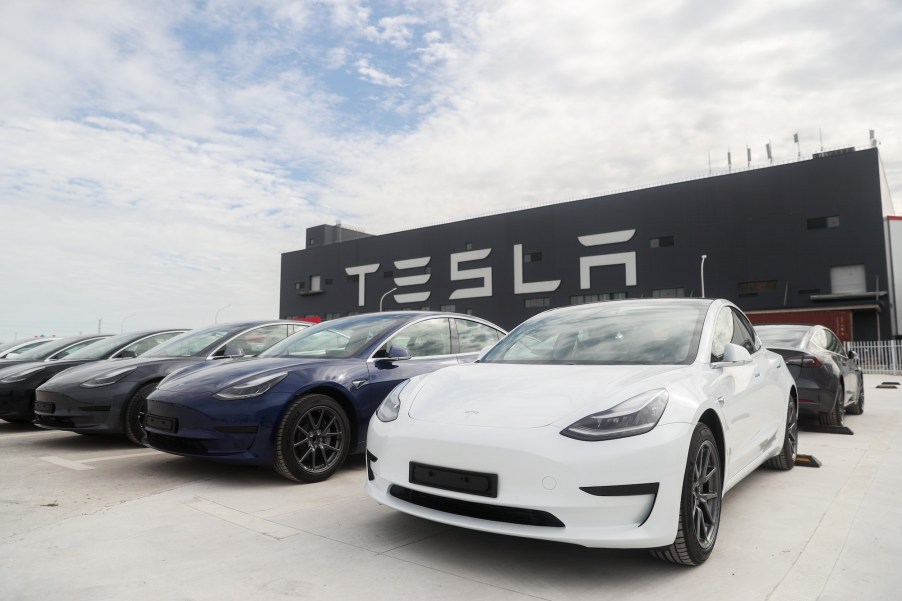
The Sneaky Way Tesla Makes Cars Without Microchips
Why has Tesla only stopped production due to the microchip shortage for three days in total? Some automakers have had to shut down lines for weeks at a time. Even top-selling vehicles like Ford’s F-150 and Chevy’s Silverado have had to halt production for lack of chips. But now Tesla has revealed why it keeps cranking out cars.
What is Tesla’s secret to continuous production?

In an earnings update for the second quarter this year, Tesla hypes its “unparalleled ability to react quickly and mitigate disruptions to manufacturing.” That is something probably every manufacturer could boast, even the ones with shut-down assembly lines. But there has to be more to Tesla’s continuous production.
There is. Teslarati says that in Tesla’s 2021 first-quarter earnings update it developed new firmware for chips so it didn’t use semiconductors. Instead, it shifted to microcontrollers. That is how it has been able to avoid production stoppages beyond those three days it stopped the Fremont plant.
“Our team has demonstrated an unparalleled ability to react quickly and mitigate disruptions to manufacturing caused by semiconductor shortages,” the Q2 statement says. “And our electrical and firmware engineering teams remain hard at work designing, developing, and validating 19 new variants of controllers in response to ongoing semiconductor shortages.”
Tesla kept production unbroken and increased production as well

This allowed not only Tesla to keep its line running but it has actually increased production for the first half of 2021. The shortage of microchips is so bad that the Biden Administration is floating an idea to catch manufacturers up. It wants to invest $52 billion into semiconductor research and manufacturing. That’s how much of a crisis the microchip shortage has created.
“While we saw ongoing semiconductor supply challenges in Q2, we were able to further grow our production,” the statement says. In fact, Tesla’s Q2 net income hit over $1 billion. That is more than the company made in all of 2020. The only way that could happen was to be cranking out cars in record numbers.
Tesla sold 201,304 vehicles in Q2 alone. Interestingly, virtually all of those were either Model 3 sedans or Model Y crossovers. Also interesting is that Tesla made over $100 million from investing in Bitcoin in Q1 but lost $23 million from it in Q2.
It took rewriting the software and using alternative chips

So rewriting the software and using alternative chips is how Tesla CEO Elon Musk described its ability to stay above water. He did warn that moving forward the modules controlling airbags and seatbelts are getting low. This could affect production for the last half of 2021.
We wonder if other manufacturers will follow Tesla’s lead and switch over to microcontrollers? In its simplest form, it means going from at least two interconnected transistors to a single integrated circuit or chip. It is more expensive but factored over hundreds of thousands of vehicles, it can’t add much to manufacturing costs. Especially when you consider how much it costs to shut an assembly line down for two weeks.



